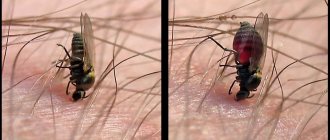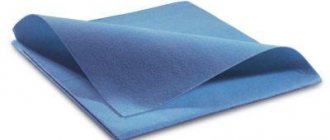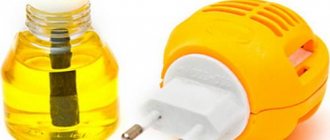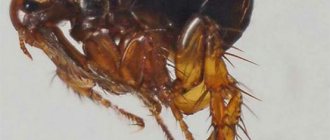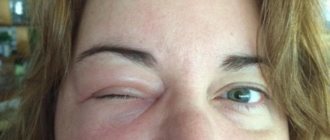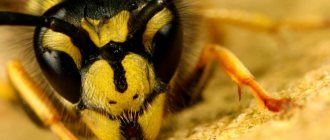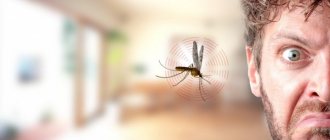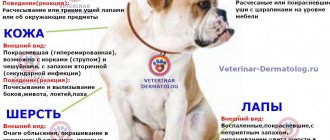Allergies to mosquito bites in children and adults are not harmless. Sometimes it can lead to dangerous consequences. Let's figure out why culicidosis occurs, what it looks like and how it manifests itself. And what to apply to the bite site to quickly relieve itching and irritation.
In summer, mosquitoes haunt you everywhere: in the country, in nature, on the beach. And it seems there is no hiding from them. If for you they are just annoying insects, don’t worry. The bites are, of course, unpleasant, but they won’t do much harm. But for children and allergy sufferers, mosquitoes are real enemies. Even one bite can cause a severe allergic reaction.
Why does culicidosis occur?
A reaction to a mosquito bite always occurs. The insect bites through the skin and injects anticoagulants into it. These substances prevent blood from clotting and have a slight anesthetic effect, so often the moment of the bite goes unnoticed.
The immune system perceives foreign substances as a threat and tries to block them in a limited area of the body. Swelling develops here: immune cells are sent to the site of the bite, the local temperature rises, irritation, itching, and redness develop.
If the immune system works normally, this reaction goes away on its own within two to three days. If the immune system is weakened or its functioning is impaired, the reaction can be too pronounced and even life-threatening. It is this intense allergy to mosquito bites that is called culicidosis. And you need to deal with it only with the help of a doctor.
pixabay.com/
Do mosquitoes carry diseases? How can you get infected from a mosquito?
The first association with diseases and mosquitoes is malaria. But in Russia it has not been registered for a long time. It is believed that scientists defeated the disease in the USSR by the early 1960s. 94% of the world's malaria cases now occur in Africa.
Mosquitoes can also transmit Dengue fever, chikungunya, yellow fever and Zika viruses. Most often these are female mosquitoes of the species Aedes aegypti and, to a lesser extent, Ae. albopictus. These types of mosquitoes do not live in Russia - only in the tropics.
In Russia, mosquitoes can carry bacterial infections (tularemia) and parasitic diseases (dirofilariasis). But this is extremely rare: according to rough estimates, in the country there is a maximum of 2-5% of infected mosquitoes.
Degrees of allergy to mosquito bites
There are three degrees of allergic reaction.
1. Lightweight. It manifests itself as itching and swelling of the bite site. The skin is usually red, but may become pink or unnaturally white. A round or oval compaction ranging from one to ten centimeters in size is formed. If the bite is on soft tissue (around the eyes, lips, under the arms), the area looks more swollen, and the seal lasts longer. In mild cases, swelling from a mosquito bite does not bother you for more than three days, but redness can last much longer. And after reducing inflammation, a scar may remain on the skin.
2. Average. Symptoms of moderate culicidosis are similar to other allergic reactions. The patient experiences sneezing, watery eyes, nasal congestion and a slight increase in body temperature. Along with redness of the bite site, which becomes the focus of an allergic reaction, red spots spread throughout the body, itch and itch. Without treatment, culicidosis will progress, and a bacterial infection may be added to the primary inflammation of the skin and mucous membranes. Therefore, it is extremely important to consult a doctor in time.
3. Heavy. A dangerous reaction of the body, which is manifested by all of the above symptoms with a pronounced violation of the general condition. Shortness of breath, nausea, abdominal pain, decreased blood pressure, and loss of consciousness may develop. With true culicidosis, rapid development of swelling of the respiratory tract is possible, which becomes a direct threat to life. In this case, you must immediately call an ambulance, as breathing problems can cause suffocation.
pixabay.com/
The severity of an allergy is determined by the functioning of the immune system, and not by the number of bites. If a person is not prone to true culicidosis, even a few dozen bites will not cause him anything but discomfort. If the immune reaction is specific, severe culicidosis can develop even after one mosquito bite.
Fleas in bed
In addition to bedbugs and mosquitoes, there are other parasites: for example, fleas. Flea vinegar is similar to mosquito vinegar. It differs from a mosquito puncture in its smaller size and quantity. Flea bites are usually concentrated in one area. They are very itchy, swollen, and red. In addition, scratches can become inflamed and pathogenic microorganisms can enter the wound.
What are there
There are more than 2,500 species of fleas that specialize in different animal hosts. Usually they rarely change owners, but in the absence of food they can choose another victim. Several species are dangerous to humans in our latitudes.
- The human flea (pulex allerans) has been virtually eradicated, but can occasionally be found. She mainly lives in beds, carpets, upholstered furniture and leaves the nest to drink blood.
- The cat flea (ctenocephalides felis) lives on cats and in their habitats. It is transmitted to dogs and people, as they are much less attached to the owner.
- The dog flea (ctenocephalides canis) behaves very similarly to the cat flea, but is more attached to its owner. In exceptional cases it can run over to a person, but usually cannot survive there.
- Other types of fleas that can bite people are hedgehog fleas, pigeon fleas, rat fleas or chicken fleas.
All species go through four stages of development. Well nourished with blood, adult females lay up to 50 eggs per day. Flea eggs do not have an adhesive effect and can fall out of fur and clothing at any time. This is one of the reasons why fighting them is time-consuming and annoying.
After 3-10 days, larvae emerge from the eggs. They primarily feed on blood in the droppings of adults, as well as dead skin, hair and other organic debris. The larvae are not yet able to suck blood. After a few days in the larval stage, they pupate, and after 7-14 days the adult parasites emerge. The flea lives after hatching on average 4-12 weeks.
What does it look like
The flea's body is brown. She has six strong legs for long jumping and a sucking, burning trunk for eating. Thanks to their flattened sides, they can move over hair, fur, and other surfaces. Depending on the species, an adult flea beetle ranges in size from 1.5 to 4 mm. By the way, fleas cannot fly, but they can jump very far. Their specially built legs allow them to jump distances of up to one meter.
How to fight
Effective flea control is not a one-time action, but a combination of various measures over a long period. The fight must begin by determining the cause of infection. Do your pets have fleas, or did they accidentally jump into the house? The reason could be an old sofa from a flea market, or a mattress from the attic.
If animals have bloodsuckers, then in addition to treatment, it is necessary to disinfect the bed, preferably the apartment. If fleas are found in the bed, then you need to wash the linen in hot water and thoroughly vacuum the mattresses. All of these measures can help with minor infestations. If there is a large area of infestation and a significant number of parasites, it is better to call a special organization.
Features of allergies to mosquito bites in adults
The formation of the immune system smoothes out most of the specific allergic reactions characteristic of childhood, including culicidosis.
But it is important to understand that if you suffered from a severe allergic reaction as a child, the symptoms of which are characteristic of moderate to severe severity, you will not be able to completely get rid of the allergy. Culicidosis does not disappear completely; it may proceed “softer” than before. Therefore, if you go into nature, where encountering mosquitoes is inevitable, you should take safety measures and protect yourself as much as possible from possible bites.
pixabay.com/
It's better not to be bitten: simple rules
The best thing about dealing with mosquitoes is to avoid them. They are most active from evening until dawn. Most mosquito swarms are found near ponds, swamps, in shady parks and forests. If an evening walk in these places cannot be avoided, clothing should cover the skin as much as possible. You should definitely use repellent. There is a wide choice, but the main thing you should pay attention to when purchasing is whether the product can be used on the body or only on clothes. Both options are acceptable and effective, but it is important not to apply the one for clothing to the skin - this can cause irritation.
It is worth using fumigators indoors when the windows are open, especially if you have noticed that mosquitoes have become frequent guests in your bedroom due to the open windows.
Treatment of culicidosis: how to relieve an allergic reaction
Mild allergies do not require treatment. Symptoms will disappear in a few days. But if the bites are very red, itchy, or itchy, you can use home or pharmacy remedies. Will help:
- cool compresses on swollen areas;
- rubbing with a soda solution in a proportion of 1 teaspoon per 200 ml of water;
- anti-inflammatory compresses with a decoction of chamomile, string, calendula;
- drying compresses made of white or blue clay.
The affected area needs to be cooled, this will remove the unpleasant symptoms. It is advisable to treat with an antiseptic - alcohol tincture of calendula or hydrogen peroxide. Apple cider vinegar, any alcohol solution, Corvalol and Valocordin, and Zvezdochka ointment relieve itching.
For mild cases of culicidosis, drug therapy is not required. But for children with severe swelling and pain at the bite sites, pediatricians prescribe oral antihistamines: Cetrin, Zodak, Suprastin. You cannot use them uncontrollably and at your own discretion. But as first aid, if you observe the rapid development of an allergic reaction, it is necessary.
For moderate degrees of culicidosis, multiple bites and severe swelling, medications are used.
pixabay.com/
Antihistamines. They reduce the severity of the allergic reaction, due to which swelling goes away and itching decreases. In childhood, timely intake of antihistamines helps to avoid scratching of papules and bacterial infections.
Gels and ointments. Products with a cooling, anti-edematous effect help relieve itching: “Fenistil”, “Psilo-balm”, “Rescuer”, “Moskitoll”. They are recommended for children. In case of severe swelling, ointments with corticosteroids are prescribed: hydrocortisone, prednisolone, Akriderm cream. They have a local anti-inflammatory effect and quickly relieve swelling.
If a severe allergic reaction occurs, seek immediate medical attention. It will not be possible to help the patient at home.
What to put on mosquito bites to prevent them from itching?
Applying pressure to the bite site with your finger or the back of your fingernail will also help control the urge to scratch. But you should not press with the sharp part of the nail - this is tantamount to combing.
To relieve itching, you can use “Calamine” - a lotion with calamine (zinc carbonate plus iron oxide) and zinc oxide. This is a white solution - when it dries, it forms a crust and relieves itching locally. It is actively used in pediatrics and helps in most cases. It is reapplied several times throughout the day, but it is important to wash off these white crusts once a day to monitor the bite and check for infection. The drug is not absorbed and does not have a systemic effect on the body.
If the effect of “Calamine” is not enough, then use a cream with 1% hydrocortisone content (for example, “Lokoid”), this is a hormonal drug.
How to avoid bee and wasp stings?
- Do not leave cut fruits and sweets on the table.
- Immediately remove cores and crusts into a sealed trash bag.
- The container for compotes/juices must have a lid.
- Teach children not to drink from the bottle, especially from opaque containers. First you need to pour it into a glass and inspect the contents.
- Do not use perfumes or creams with sweet or floral scents.
- Do not wave your arms to ward off wasps and bees.
- If you have already stunned the wasp, take it as far as possible without touching it with your hands, since the insect may still be alive, they could step on it with bare feet or put a hand on it.
- Use repellents.
Why do mosquitoes bite some people more and leave others alone?
According to scientists' research, mosquitoes choose a victim based on information collected by numerous receptors located on the proboscis. In short, female mosquitoes “smell” a person: his smell, sense his blood type and even the acids, vitamins and other substances that make up it.
According to scientists, mosquitoes are able to smell chemicals such as:
- uric acid and its excess in the body;
- some types of hormones;
- cholesterol;
- carbon dioxide;
- hormones released with human sweat;
- steroids.
Mosquitoes are also able to distinguish blood type and respond to movement or body temperature.
Many have encountered a situation where, in a large company, mosquitoes bite more of some people, and practically do not touch individuals. And jokes like: “He/she is more delicious” have a certain meaning. The fact is that, given an equal choice at first glance, a female mosquito is more likely to bite a person who has the substances listed in the list above in their blood or on the surface of their skin.
Interesting! The joke that someone is really “tastier” to mosquitoes is not without meaning . But if a person is alone and does not smell of pheromones, the female mosquito will bite him without a twinge of conscience, with all that it entails.
External preparations
Mosquitoes sting a person on any part of the body and even on the face, so it is not always possible to disguise unpleasant marks with clothing. Redness and swelling may disappear within 10 minutes or may remain for days.
Ointments, creams and gels help:
- get rid of swelling and inflammation;
- soothe itching;
- reduce the risk of scarring after scratching.
The cream works faster than other drugs. Thanks to the fat base, the healing components are absorbed in 3-5 minutes and relieve the skin from itching and inflammation.
The following drugs have a proven effect:
- Rescuer ointment;
- Akriderm cream;
- Soventol gel or cream;
- Levomekol ointment;
- Fenistil gel;
- zinc ointment;
- Psilo-balm gel.
Applying the drug 5-10 minutes after the bite reduces the likelihood of negative consequences.
A favorite among consumers is Spasatel ointment. It disinfects the wound and soothes itching thanks to its cooling effect.
Levomekol and Fenistil are recommended to be applied when swelling or secondary inflammation occurs - urticaria or rash.
You should carefully study the instructions for the drugs - there are side effects.
